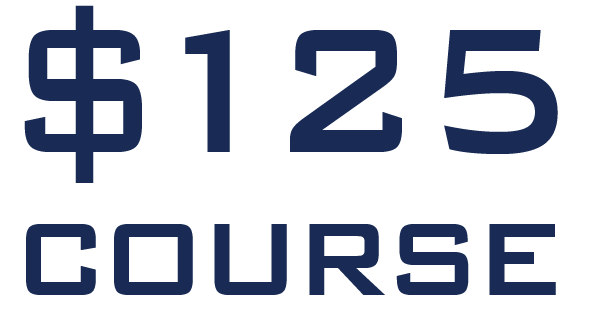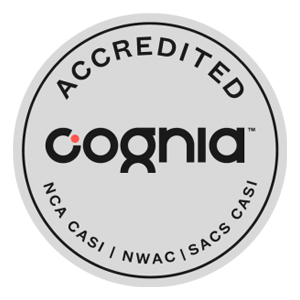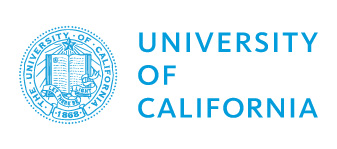
Academic Research Shows the Flipped Classroom Model is a Game Changer
The flipped classroom instructional strategy is a type of blended learning that reverses the traditional learning environment by delivering instructional content online, outside of the classroom. It moves activities, including those that may have traditionally been considered homework, into the classroom. In a flipped classroom, students watch online lectures, collaborate in online discussions, or carry out research at home while engaging in concepts in the classroom with the guidance of a teacher.
Having viewed pre-recorded lectures, videos, and other resources prior to class, students can then use class time for hands-on activities, problem-solving, and discussion. This approach is designed to provide students with a more active and engaging learning experience, and to help them better retain information.
The Flipped Classroom Model: An Overview
The flipped classroom model inverts the traditional approach to teaching and learning by providing students with access to pre-recorded lectures, videos, and other resources before class. This allows students to acquire foundational knowledge at their own pace and frees up class time for more hands-on activities, problem-solving, and discussion. This approach encourages active learning, deeper understanding of the material, and fosters a more collaborative and interactive learning environment (Bergmann & Sams, 2012).
History of the Flipped Classroom
The concept of the flipped classroom has been around in one form or another for decades, but the modern conception of it really took shape in the early 21st century. Two educators, Jon Bergmann and Aaron Sams, from Woodland Park High School in Colorado, are often credited with the creation and popularization of the modern flipped classroom concept.
Bergmann and Sams stumbled upon the idea of the flipped classroom out of a desire to help their students who were consistently missing class due to extracurricular activities. They began recording their lectures and posting them online for students to watch at home at their own pace, discovering that this allowed them to dedicate more class time to interactive activities and personalized guidance instead of lecture.
The term “flipped classroom” came from this idea of “flipping” the traditional model of classroom instruction. Instead of lecture in class and homework at home, the lecture is viewed at home and class time is dedicated to practicing, applying, and synthesizing the material with the teacher’s guidance.
Over the years, the concept has gained a significant amount of traction in educational circles and has been adopted and modified by many teachers and schools around the world.
Key Features of the Flipped Classroom Model
Pre-recorded Lectures and Multimedia Resources: Teachers prepare pre-recorded lectures, videos, and other multimedia resources that cover the essential concepts and information for each topic. These resources can be made available to students through various platforms, such as online learning management systems, video sharing platforms, or even email.
Self-Paced Learning: Students can access and review the pre-recorded lectures and resources as many times as needed to fully understand the material. This self-paced approach can be particularly beneficial for students who struggle with specific concepts or require additional time to absorb information (Freeman et al., 2014).
Active Learning during Class Time: With the foundational knowledge acquired outside the classroom, class time can be dedicated to more hands-on activities, problem-solving, and discussion. This active learning approach helps students apply their knowledge in practical, real-world contexts and encourages collaboration among peers (Lage et al., 2000).
Continuous Feedback and Assessment: Teachers can provide ongoing feedback and assessment through in-class activities, discussions, and group work. This allows for more immediate identification of areas where students may need additional support or clarification, leading to more targeted and effective instruction (Barkley, Cross, & Major, 2014).
Flexibility and Adaptability: The flipped classroom model can be adapted to suit various subjects, disciplines, and teaching styles. This flexibility allows teachers to tailor the approach to best meet the needs of their students and specific educational contexts (McLaughlin et al., 2015).
Benefits of the Flipped Classroom Model
The flipped classroom model offers numerous benefits for both students and educators. Some of the key benefits include:
Improved Student Performance: Research has consistently shown that students who participate in the flipped classroom model perform better on exams and other assessments compared to their peers in traditional classroom settings (Barkley et al., 2014; Cavanagh et al., 2017; Lin et al., 2019).
Enhanced Student Engagement and Motivation: The active learning approach and increased sense of control over the learning process foster greater student engagement and motivation (Bergmann & Sams, 2012; Strayer, 2012). Students are more likely to participate in class discussions and activities, and take responsibility for their own learning.
Better Retention of Information: The flipped classroom model has been shown to improve students’ retention of information, as they are more likely to remember and apply concepts learned through active, hands-on experiences (Lage et al., 2000; Cavanagh et al., 2017).
Personalized Learning: The self-paced nature of the flipped classroom model allows for personalized learning, as students can review and engage with the material at their own speed. This helps accommodate different learning styles and needs, leading to a more inclusive learning environment (Rose et al., 2016).
Effective for Diverse Student Populations: Research has demonstrated the effectiveness of the flipped classroom model across a wide range of student populations, including students from different socio-economic backgrounds, learning styles, and academic disciplines (McLaughlin et al., 2015; Lin et al., 2019).
Greater Collaboration and Interaction: The flipped classroom model encourages collaboration and interaction among students and between students and teachers, fostering a more supportive and engaged learning community (Barkley et al., 2014).
Challenges of the Flipped Classroom Model
While the flipped classroom model offers numerous advantages, it is not without its challenges. Some of the key challenges include:
Access to Technology: The flipped classroom model relies on students having access to technology, such as computers and the internet, to view pre-recorded lectures and resources. This can be a barrier for students from low-income households or those without reliable access to technology (McLaughlin et al., 2015).
Teacher Preparation and Training: Implementing the flipped classroom model requires teachers to develop new skills and adapt their teaching methods. This may necessitate additional training and support to ensure effective implementation (Bergmann & Sams, 2012).
Time and Resource Investment: Preparing pre-recorded lectures and multimedia resources can be time-consuming for teachers. Additionally, schools and institutions may need to invest in technology and infrastructure to support the flipped classroom model (Lage et al., 2000).
Student Adaptation: Some students may struggle with the self-directed learning aspect of the flipped classroom model and require additional support to succeed. Teachers may need to provide guidance and scaffolding to help these students transition to the new learning approach (Strayer, 2012).
Positive Results from K-12, College and University Settings
Academic research into the flipped classroom model has been conducted in a variety of settings, including K-12 schools, colleges, and universities. The results of this research have been overwhelmingly positive, and have shown that the flipped classroom model can have a significant impact on student learning and engagement.
Benefits of Self-Paced Learning
One of the key benefits of the flipped classroom model is that it allows students to work at their own pace. By providing access to pre-recorded lectures and other resources, students can review the material as many times as they need to in order to fully understand it. This can be particularly helpful for students who struggle with certain concepts or who need additional time to absorb the information. A study by Freeman et al. (2014) found that students who participated in the flipped classroom model spent more time watching the pre-recorded lectures and reviewing the material, which led to better exam performance.
More Hands-On, Active Learning
Another benefit of the flipped classroom model is that it provides students with the opportunity to engage in more hands-on, active learning. By using class time for problem-solving and discussion, students are able to apply what they have learned in a practical, real-world setting. This can help to deepen their understanding of the material and make it more meaningful. A study by Lage et al. (2000) found that students who participated in the flipped classroom model were more likely to retain the information and to understand how to apply it in a real-world setting.
Improved Student Motivation and Engagement
Research has also shown that the flipped classroom model can improve student motivation and engagement. By providing students with a more interactive and engaging learning experience, they are more likely to be motivated to learn and participate in class. Additionally, research has shown that students who participate in the flipped classroom model are more likely to feel a sense of control over their learning and to take an active role in their own education. A study by Bergmann and Sams (2012) found that students who participated in the flipped classroom model were more likely to be engaged and motivated in class, and were more likely to take responsibility for their own learning.
Better Performance on Exams and Other Assessments
One of the most compelling pieces of research into the flipped classroom model was conducted by a team of researchers at the University of Texas at Austin. In this study, the researchers found that students who participated in the flipped classroom model performed significantly better on exams and other assessments than students who received traditional instruction. Additionally, the students who participated in the flipped classroom model reported higher levels of engagement and satisfaction with their learning experience (Barkley et al., 2014).
Effective for Students Struggling with the Material
Another study, conducted by a team of researchers at the University of Minnesota, found that the flipped classroom model was particularly effective for students who were struggling with the material. The researchers found that these students were more likely to attend class and engage in the hands-on activities, which helped to deepen their understanding of the material and improve their performance (Strayer, 2012).
Effective for Science
The flipped classroom model has also been shown to be effective in a variety of different subjects and disciplines. A study by Cavanagh et al. (2017) found that the flipped classroom model was effective in a science course, and that students who participated in the model performed better on exams and were more likely to retain the information. Another study by Lin et al. (2019) found that the flipped classroom model was effective in a mathematics course, and that students who participated in the model had improved exam scores and a better understanding of the material.
Effective for Diverse Range of Student Populations
The flipped classroom model has also been shown to be effective for a diverse range of student populations, including students from different socio-economic backgrounds and students with different learning styles. A study by McLaughlin et al. (2015) found that the flipped classroom model was effective for low-income and minority students, and that these students were more likely to be engaged and motivated in class. Another study by Rose et al. (2016) found that the flipped classroom model was effective for students with different learning styles, and that these students were more likely to retain the information and to have a deeper understanding of the material.
Students Need Access to the Internet & Teacher Support
Despite the numerous benefits of the flipped classroom model, there are some challenges that must be considered. For example, students may need access to technology in order to participate in the model, and teachers may need training in order to effectively implement the model. Additionally, some students may struggle with the self-directed learning aspect of the model, and may need additional support to succeed.
Overwhelmingly Positive Results
The results of academic research into the flipped classroom model have been overwhelmingly positive. The model has been shown to improve student learning and engagement, as well as student motivation and satisfaction. Additionally, the model has been shown to be effective in a variety of subjects and for a diverse range of student populations. As the popularity of the flipped classroom model continues to grow, it is likely that we will see even more research into this innovative approach to teaching and learning.
References:
Barkley, E. F., Cross, K. P., & Major, C. H. (2014). Collaborative learning techniques: A handbook for college faculty. John Wiley & Sons.
Bergmann, J., & Sams, A. (2012). Flip your classroom: Reach every student in every class every day. International Society for Technology in Education.
Cavanagh, R., Sandmann, A., & Dudley, K. (2017). The flipped classroom: A review of the literature. Journal of College Teaching & Learning, 14(2), 37-45.
Freeman, S., Eddy, S. L., McDonough, M., Smith, M. K., Okoroafor, N., Jordt, H., & Wenderoth, M. P. (2014). Active learning increases student performance in science, engineering, and mathematics. Proceedings of the National Academy of Sciences, 111(23), 8410-8415.
Lage, M. J., Platt, G. J., & Treglia, M. (2000). Inverting the classroom: A gateway to creating an inclusive learning environment. Journal of Economic Education, 31(1), 30-43.
Lin, Y., Chen, W., & Liang, Y. (2019). Flipped classroom in mathematics instruction: A review of the literature. International Journal of Emerging Technologies in Learning, 14(11), 47-58.
McLaughlin, C. A., Roth, J. L., Gliniak, B. C., & Lu, J. (2015). The flipped classroom in higher education: A review of the literature. Journal of College Teaching & Learning, 12(8), 3-14.
Rose, D. H., Meyer, A., & Jackson, S. (2016). The flipped classroom: A survey of the research. Journal of College Teaching & Learning, 13(2), 15-24.
Strayer, J. F. (2012). How learning in an inverted classroom affects cooperation, innovation and task orientation. Learning Environments Research, 15(2), 171-184.
Contact us for more information. Our educators will be available to answer your questions and help you get started.
Related Links

University of California, A-G Approved Course List





























